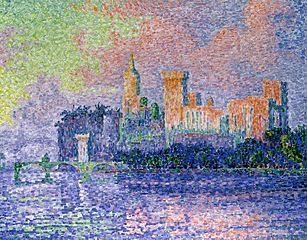Imprinted Life discussion

This topic is about
Muse
Mary Novik's Historical Novels
>
Muse, part 1, Clairefontaine
date newest »
newest »
 newest »
newest »
 chapters 6-11
chapters 6-11Solange grows from childhood to young adulthood at Clairefontaine, experiencing the varied activities inside the abbey, and envisioning her future "as a scribe" or a "painter-scribe",
"...at night I dreamt of gold and silver foil beaten to supreme thinness and the manuscripts that would spill from my pen in the years to come".She's copying and illuminating a commission for Dante's Vita Nuova , secretly making at night a personal copy of it,
"...I would make a second copy of La Vita Nuova for myself, penning it at night when the scriptorium was empty."An interesting historical insight is the technological rediscovery of glassmaking after the Dark Ages, Quick History: Window Glass. In the fourteenth century, the abbey replaced its oiled-parchment windows with glass.
 chapters 12-13
chapters 12-13 I just noticed Edwin Mullins's The Popes of Avignon: A Century in Exile in the library catalog. Its topic pertains to the southern France time and place in which Solange, Petrarch, and other characters play out this novel. Solange's story begins in the first decade of the fourteenth century when Pope Clement V's administration moves from Rome to Avignon; she grows to maturity at Clairefontaine abbey during controversial Pope John XXII's reign, and later becomes the mistress of Pope Clement VI.

"Le Palais des Papes, Avignon" (1909), oil painting by Paul Signac
Books mentioned in this topic
The Popes of Avignon: A Century in Exile (other topics)Vita Nuova (other topics)
The Name of the Rose (other topics)
Muse (other topics)
The Romance of the Rose (other topics)



Like Eco's The Name of the Rose, Mary Novik's book Muse is set in the fourteenth century, beginning in the year 1309, the same year the papal court moves from Italy to Avignon, France, and ending during the era of Pope Clement VI in 1348. The hungry Solange Le Blanc is six years old, carrying a perfume bottle of her dead mother's tears, when a priest brings her to the Benedictine abbey of Clairefontaine. Solange's reputed clairvoyant ability precedes her and from her point of view earns some of her keep there. Abbess Agnes compares Solange to the visionary Hildegard of Bingen while writing down Solange's visions in a lined ledger. Solange finds friends in nine-year-old motherless Elizabeth and in the scribe Mme de Fore whose favorite reading is The Romance of the Rose and whose preferred language is "la langue d'oc" of northern France.
The author's choice of words lends authenticity to the time period; sometimes a tiny glossary might be convenient for a quick lookup. The pictorial, sensual images bring to mind both a painting and a scribe's magnifying glass,Another bridge to the century is the spiritual interpretation given to physical objects,Sometimes a description is pure poetry,There's a lot of soaring contrasts in the descriptions, too.